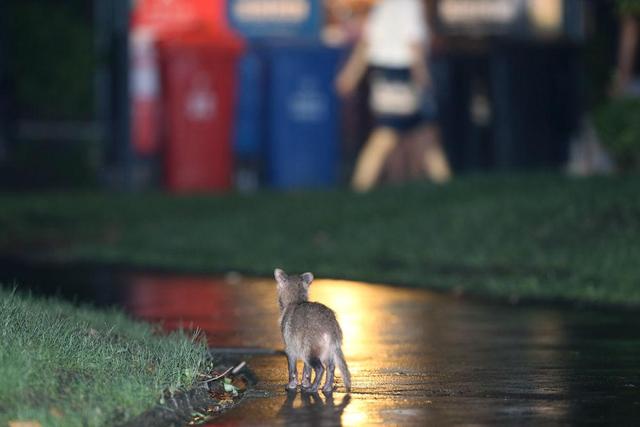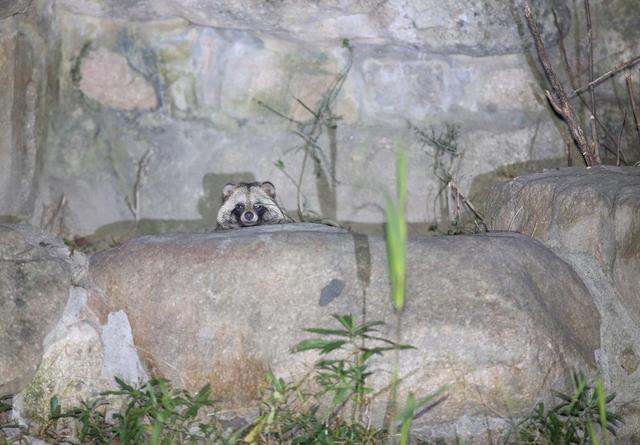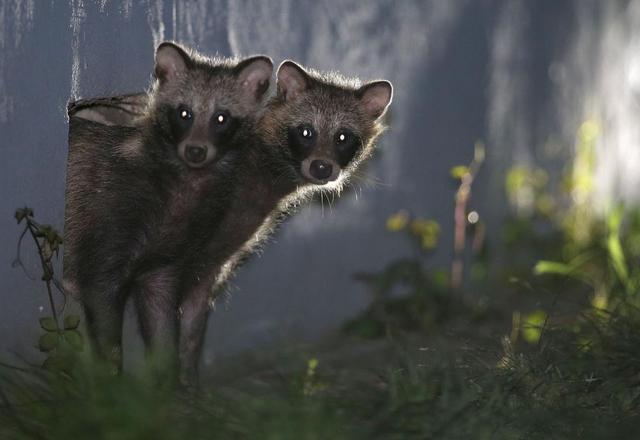This article was transferred from Xinhua News Agency;
Xinhua News Agency, Shanghai, June 5, news, a group of Asian elephants entered Kunming all the way north, the northeast tiger Wandashan No.1 broke into the village, and raccoons appeared in more than 100 communities in Shanghai … Recently, wild animals have entered human habitats from time to time in many places. What should we do about this? The reporter visited the team of Professor Wang Fang from the School of Life Sciences of Fudan University to explore the management of urban wildlife, and looked for the answer together.
There are many "animal residents" in the city.
In Shanghai, a survey about "animal residents" is going on. There are 12 investigation areas and 300 infrared cameras specially designed for wild animals. With the support of Shanghai Forestry Bureau and other relevant departments, Wang Fang’s team hopes to get a demonstration plan for urban wildlife management through one or two years of follow-up.
"The wildlife in the city is not just as simple as protecting it." Wang Fang’s research found that the number of some wild species in cities increased rapidly and their distribution range was also expanding. Take raccoons as an example. In 2015, raccoons were found in more than 40 communities in Shanghai. By 2020, the number of raccoons in Shanghai will reach more than 150, an increase of more than 2 times.

↑ Photographed in a community in Shanghai. (provided by Wang Fang)
With the increase of "animal residents", the contact and conflict between people and animals have increased accordingly. Research shows that when there are less than two raccoons per hectare, people will hardly feel the existence of raccoons, but when the number exceeds five, it will affect people’s lives. According to the statistics of the team, in 2020, there were about 1,000 complaints about wild animals disturbing people in Shanghai, some of whom were troubled by the excrement and noise of raccoons, while others were frightened by raccoons. In addition to raccoons, citizens are also uneasy about the existence of bats. In 2021, there were complaints about the destruction of gardens by red-bellied squirrels.
At the same time, the habits of raccoons have also changed quietly: from living alone to group activities, from staying up all day and going out all night, from being afraid of people to approaching people actively. "The biggest change is their attitude towards people and the human world." Wang Fang said, "In the past, people ran immediately when they saw them three or four meters away, but if there were behaviors such as active feeding, they would take the initiative to chase people for food, which might disturb the elderly and children."

↑ in the small garden of the city. (provided by Wang Fang)
The change of raccoons in Shanghai is basically consistent with the change trend of wild animals in other cities around the world. For example, Wang Fang said: "For example, the red fox in Europe, the American black bear and raccoon all show the characteristics of rapid urbanization. The changing direction of raccoons is what we can expect, but the speed of change surprises us."
Why do they "leave home for the city"?
Why do wild animals leave their original living environment and enter cities? Wang Fang believes that there are mainly several aspects:
First of all, migration is the instinctive demand of wild animals. No one can confine wild animals to protected areas. The purposes of animal migration include but are not limited to food, water, spouses, avoiding natural enemies and finding better habitats.
"However, it is easy to overlook that when the habitat becomes broken, many animals lose the opportunity and ability to migrate, and it often takes decades to explore and rebuild again. Many species, including Asian elephants, are going through this process. They will try and make mistakes, conflict, and run to places that seem’ should not go’, but these processes are in line with the laws of nature. " Wang Fang said.
Secondly, compared with the wilderness and the urban-rural junction, the urban environment recovers faster. By the end of 2020, the green coverage rate of Shanghai’s built-up areas is as high as 40%. There are not only large areas of forests and wetlands, but also small and beautiful ecological areas such as street gardens and pocket parks. At this time, the city will be like a hot spot, attracting the surrounding animals.
Finally, the urban environment provides shelter for some wild animals. Raccoons, squirrels, weasels and other animals have very flexible lifestyles. They are good at adjusting according to the characteristics of cities. There are no natural enemies in cities. As long as they can adapt to urban life and human beings, they will hardly encounter threats.

↑ Two raccoons are in the city. (provided by Wang Fang)
How to coexist in the collision?
When wild animals enter the city, urban residents need to go through a learning process. From curiosity at the beginning, to dissatisfaction, and then to getting used to it, a new order will be formed between urban residents and wild animals.
Wang Fang believes that the establishment of order is inseparable from the understanding of wild animals and the study of urban management. In the past year, Wang Fang’s team conducted extensive research in Shanghai, and basically grasped the changes of raccoons in the city. In addition to determining the threshold number per hectare, they also established a habitat model to further analyze the mechanism driving the changes of wild animals.
"We found that raccoons don’t need large areas of forests and green spaces, and the two main factors affecting their distribution are shrubs and water sources. They also like small and medium-sized roads. During the day, cars come and go on the roads, and at night they become’ high-speed passages’ for animals. " Zhao Qianqian is a member of Wang Fang’s team. She put collars with positioning functions on five raccoons.

Volunteers discuss the urban wildlife survey together. (provided by Wang Fang)
The diversity of urban wildlife needs to be protected without hindering the normal operation of society. Up to now, local governments and citizens have maintained a great degree of tolerance for wild animals "entering the city", which not only helped the Northeast Tiger who broke into the village to return to Shan Ye, but also suffered economic losses of millions of yuan caused by elephant "sightseeing".
However, it does not rule out taking appropriate intervention measures when necessary. According to Wang Fang, in July, 2020, dozens of raccoons in a community in Shanghai had a group behavior disorder, which caused great interference. Therefore, the first wildlife hunting license was opened in Shanghai, which captured raccoons in the community and safely transferred them to the wild environment.
Wang Fang also said that the best way to solve the problem of wild animals "entering the city" is to protect and restore the living environment of wild animals, preserve the buffer zone of the city, and minimize the direct conflict between wild animals and urban residents.
"Cities are first and foremost places where people live and work. There will never be an optimal plan for urban wildlife management, and conflicts will always exist. No matter how good the system is, it needs continuous adjustment. In this regard, cities such as Shanghai have made a lot of explorations and the experience is extremely precious. " Wang Fang said.
(The original title is "Wild animals enter the city from time to time". How can we live in harmony? 》)
Reporting/feedback